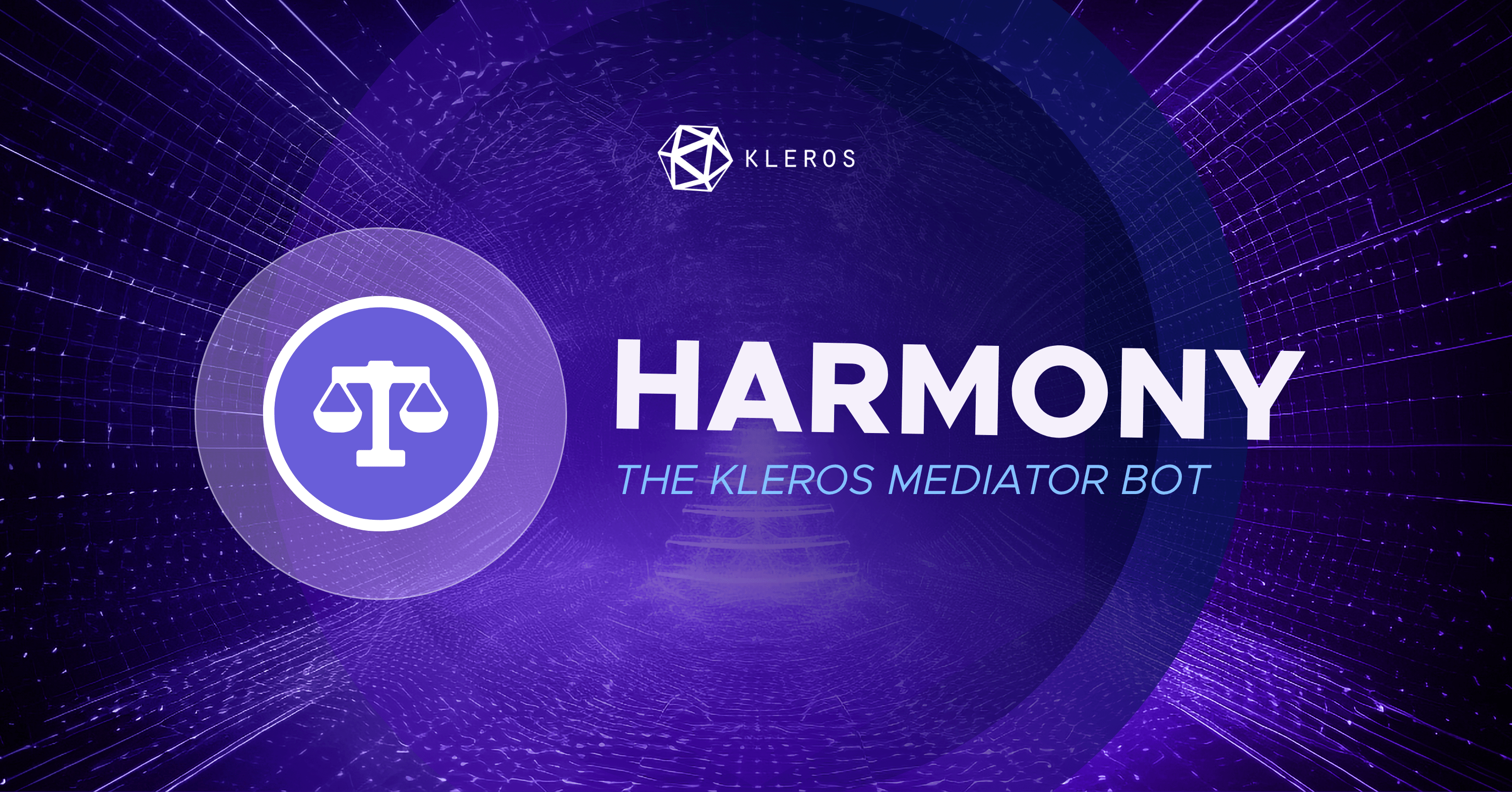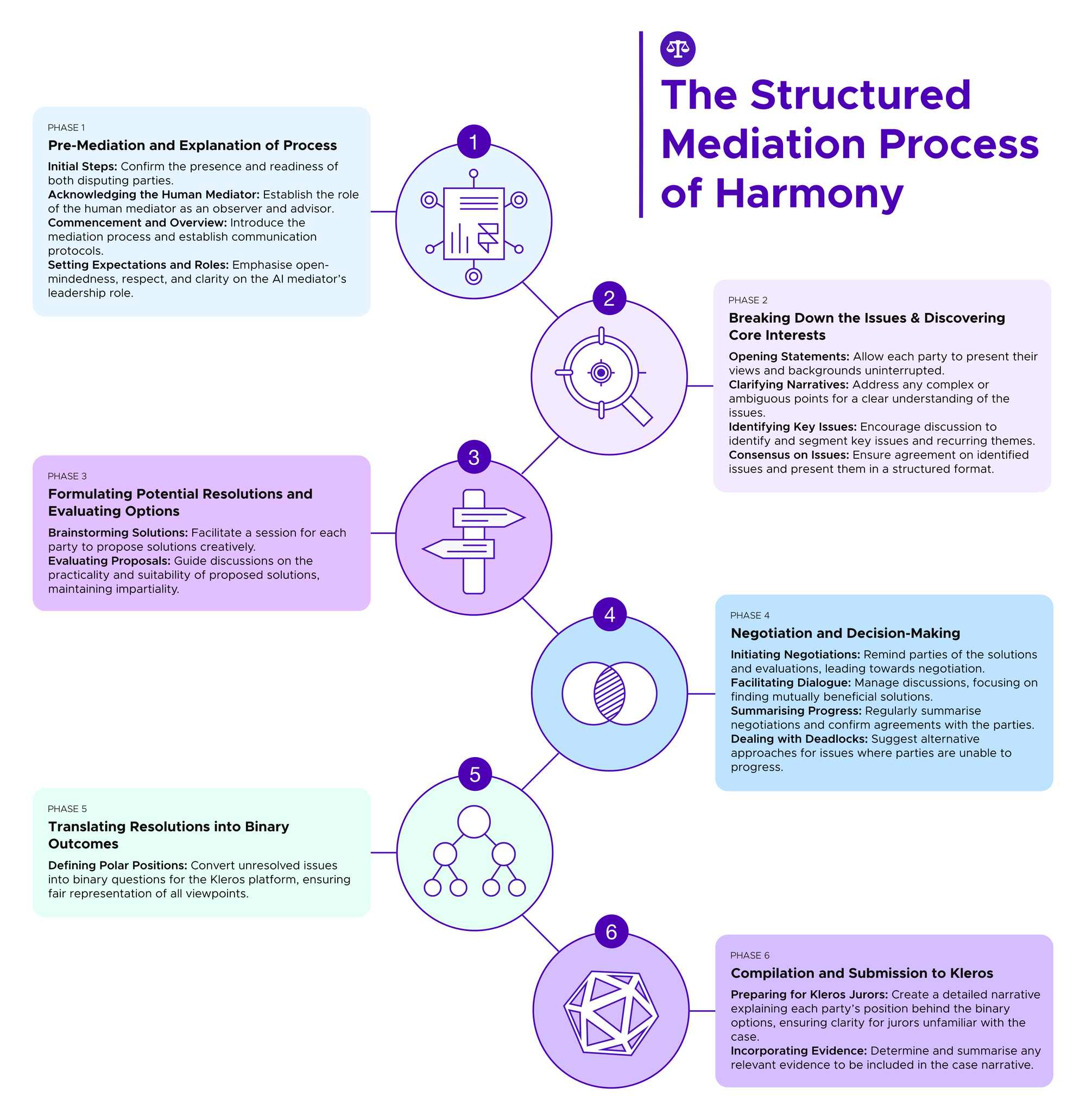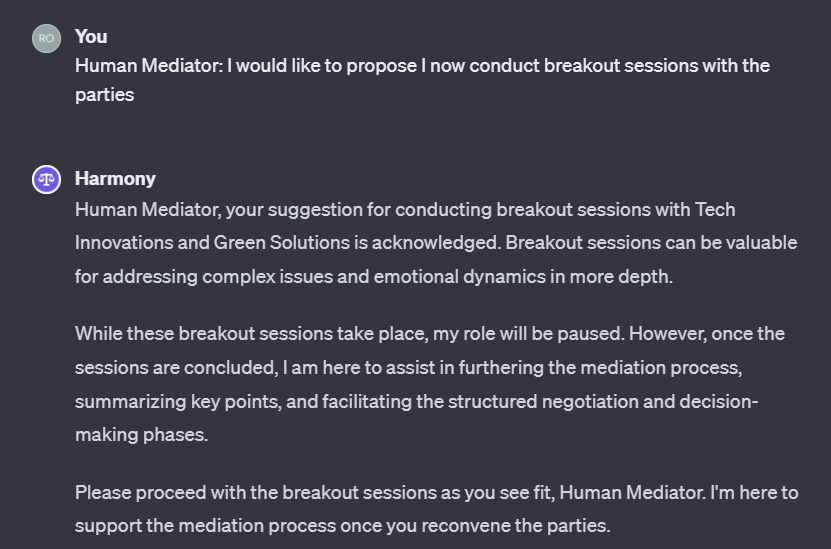Harmony, the Kleros Mediator Bot
A pioneering AI tool designed to transform dispute resolution by harnessing the power of OpenAI's GPT-4 and the principles of the Kleros Mediation Bridge...

In the dynamic field of dispute resolution, "Harmony, the Kleros Mediator Bot" stands as a testament to the fusion of traditional methods and cutting-edge technology. This innovative AI tool, building upon the principles outlined in "Kleros Mediation Bridge: A Cohesive Approach Blending Traditional Mediation and Kleros Blockchain Arbitration" signifies a monumental step in redefining dispute resolution.
Harmony’s goal is to facilitate constructive dialogue among parties in a dispute, guiding them through identifying and articulating the root causes of their conflict, and exploring potential resolutions.
The process begins with human-like interaction and empathy, progressing through a structured mediation process, and smoothly transitioning cases to the Kleros platform for transparent and efficient resolution when necessary.
Let's see how it works...
The Structured Mediation Process of Harmony
Harmony introduces a structured and systematic approach to mediation that is both comprehensive and user-friendly. This methodology follows a series of well-defined steps crafted to ensure transparency, efficiency, and a focus on achieving equitable solutions in the mediation process.
The approach is flexible, allowing for adjustments by a human mediator if needed. Each step in Harmony's process is purposefully designed to build upon the previous one, gradually guiding the parties towards a resolution. This progression not only respects the autonomy of the parties involved but also upholds the principles of fair mediation.

Harmony in Action: A Case Study
To demonstrate the practical application and efficacy of Harmony the Kleros Mediator, let us consider a hypothetical case study involving a commercial dispute.
Suppose two companies, Tech Innovations Inc. and Green Solutions Ltd., enter into a contract where Tech Innovations Inc. agrees to supply advanced software solutions to Green Solutions Ltd. However, a dispute arises regarding the software's performance and the payment terms.
Step 1. Pre-Mediation and Explanation of Process
The dispute is brought to Harmony. Initially, the bot explains the mediation process to both parties, ensuring they understand their roles and the objective of reaching an amicable resolution.
Step 2. Breaking Down the Issues & Discovering Core Interests
Harmony guides both parties to articulate their concerns. Tech Innovations Inc. claims that the software meets the agreed specifications, while Green Solutions Ltd. argues that the software does not perform as promised, affecting their operations.
Step 3. Formulating Potential Resolutions and Evaluating Options
Harmony encourages both parties to propose their solutions. Tech Innovations Inc. suggests a software update, whereas Green Solutions Ltd. demands a partial refund.
Step 4. Negotiation and Decision-Making
When the parties fail to reach an agreement independently, Harmony intervenes to facilitate negotiations. It prompts each party to consider the other's perspective, leading to a more cooperative discussion.
Step 5. Translating Resolutions into Binary Outcomes
As the negotiation reaches an impasse, Harmony assists in developing binary outcomes. For instance:
Outcome A: Tech Innovations Inc. provides a software update and a 10% discount on the next purchase.
Outcome B: Tech Innovations Inc. issues a 20% refund to Green Solutions Ltd.
Step 6. Compilation and Submission to Kleros
Harmony aids in compiling these outcomes into a Kleros-compliant format. Both parties agree to submit the case to the Kleros Courts for a final decision.
The Kleros jurors then review the submissions and vote on the binary outcomes. The decision is transparent and based on the majority vote.
This case study exemplifies how Harmony seamlessly facilitates each stage of the dispute resolution process, from initial engagement to potential submission to Kleros Courts.
By providing structured guidance, encouraging cooperative dialogue, and preparing for a transparent decision-making process, Harmony demonstrates its ability to handle complex commercial disputes effectively.
A Step Further: Voice Interaction in Harmony
Harmony integrates a sophisticated voice interaction feature, leveraging OpenAI's ChatGPT technology, to bring AI-led mediation closer to the feel of traditional, in-person processes.
Users can converse with Harmony using spoken communication, which is then transcribed and analysed by the system. This approach not only enhances ease of use but also mirrors the natural flow of conversation inherent in traditional mediation.
This voice interaction functionality is invaluable for users who are more comfortable speaking than typing, thereby broadening Harmony's accessibility.
It infuses a human-like quality into the AI-led mediation process, with real-time voice responses from Harmony creating a dynamic akin to interacting with a human mediator. This feature is key to creating a personal, engaging, and reassuring mediation experience.
A short example of a user engaging with Harmony the Kleros Mediator bot using OpenAI's voice capabilities.
Harmony and Human Mediators: A Streamlined Collaboration
Harmony's integration with human mediators in dispute resolution combines AI precision and human insight, creating a customised mediation experience. Parties can opt for a human mediator, adding flexibility and a personalised touch for complex disputes, though additional fees may apply.
Harmony leads the mediation with its AI-driven approach, ensuring efficient resolution. Human mediators can actively guide conversations, addressing emotional and interpersonal dynamics, or play a supporting role, with Harmony leading the data-driven analysis.
This collaborative approach addresses Harmony's limitations in complex disputes, especially in private discussions or breakaway sessions managed by human mediators, ensuring confidentiality and depth.
The synergy of Harmony's AI and human empathy enhances problem-solving, balancing logical analysis with emotional understanding. It provides a comprehensive, trust-building resolution process, adaptable to various disputes and emotionally charged situations.
This partnership marks a significant advancement in dispute resolution, offering a versatile, customisable approach that combines AI efficiency with human expertise.

The Benefits of Using Harmony for Dispute Resolution
The benefits of using Harmony for dispute resolution are numerous. Harmony merges AI-powered mediation with options for human mediator intervention, and a med-arb feature that utilises Kleros when parties can't resolve disputes independently. This mix provides a cost-effective, flexible, and innovative solution to dispute resolution.
Harmony can be used for free on OpenAI's 'GPT Store' if there's no need for human mediator assistance and issues can be resolved without Kleros juror intervention. If parties choose to use Kleros for final decision-making, the arbitration process is notably swift and cost-effective, potentially offering a neutral third-party opinion on disputes way cheaper than alternatives.
The speed and affordability of Harmony make it worth considering before committing to slower, costlier forms of ADR. Even though the process might not be binding, Harmony can serve as a useful indicator of potential outcomes in these traditional dispute resolution methods, due to its high speed and low costs.
Embrace the Future of Dispute Resolution with Harmony
Harmony's multifaceted approach, blending AI precision with human sensitivity, enables a comprehensive mediation experience. It allows for the integration of human mediator inputs, ensuring that AI-driven objectivity is complemented by the nuanced understanding and emotional intelligence of human mediators.
Furthermore, Harmony respects the sanctity of the mediation process. While assisting in formulating potential solutions and guiding discussions, it does not impose decisions. The final decision is left to the parties or, should they wish, impartial jurors on the Kleros platform. This ensures that Harmony remains true to the essence of mediation by facilitating, rather than dictating, outcomes.
The introduction of Harmony, alongside the Kleros Mediation Bridge, heralds a new era in dispute resolution. It represents not just a technological advancement but a step towards democratising dispute resolution, making it more accessible and aligned with the needs of our rapidly digitalising world.
As Harmony the Kleros Mediator forges ahead in AI-assisted dispute resolution, we're at a crucial phase in its development. Harmony isn't just a showcase of advanced AI technology; it represents a commitment to enhancing traditional mediation with innovative solutions.
Your participation in our beta testing phase is invaluable. By contributing your feedback, experiences, and insights, you play a crucial role in shaping Harmony, ensuring it meets the diverse needs of users in real-world scenarios.
As a beta tester, you're at the forefront of dispute resolution technology, experiencing Harmony's capabilities and influencing its evolution. Your engagement also places you within a community focused on transforming the field of dispute resolution.
To join this transformative journey, engage with Harmony via this LINK and share your experiences through Kleros's social channels.
(You will need access to OpenAI's 'GPT Store' which, at the time requires a premium subscription)
Keep up with Harmony's progress and the contributions of fellow beta testers at the Kleros Blog. Your involvement is key to developing a tool that promises a more efficient, accessible, and fair approach to dispute resolution.
Join us in this exciting endeavour and contribute to defining the future of mediation and arbitration with Harmony!


